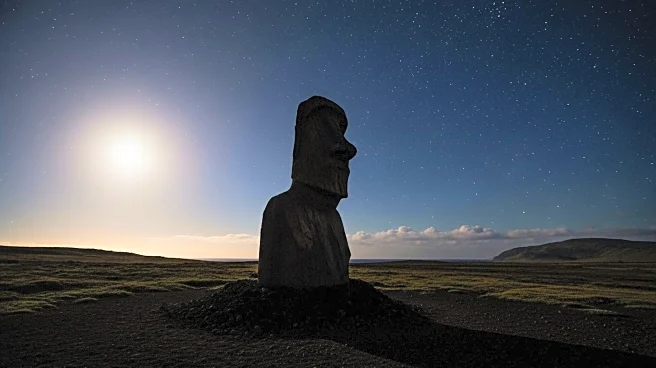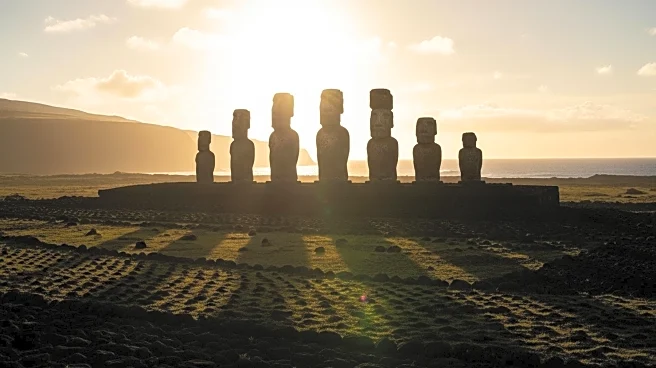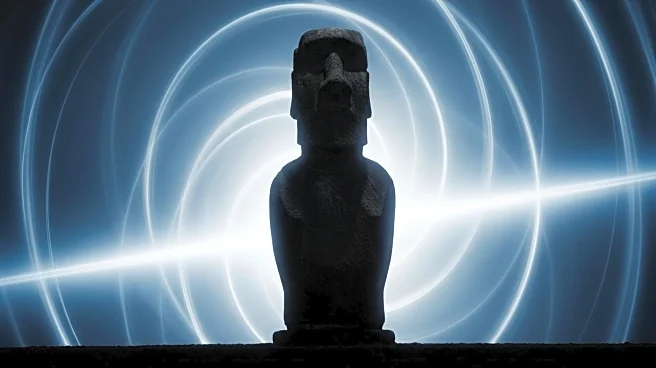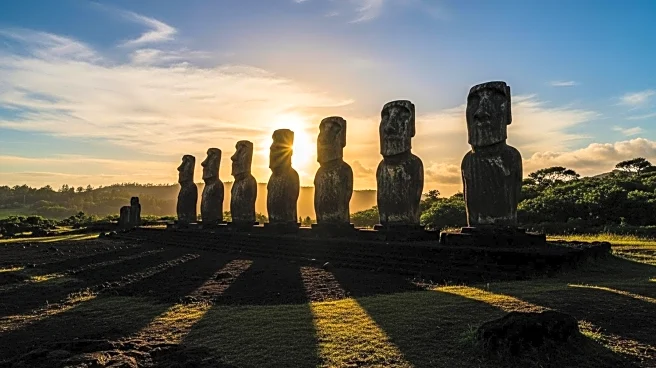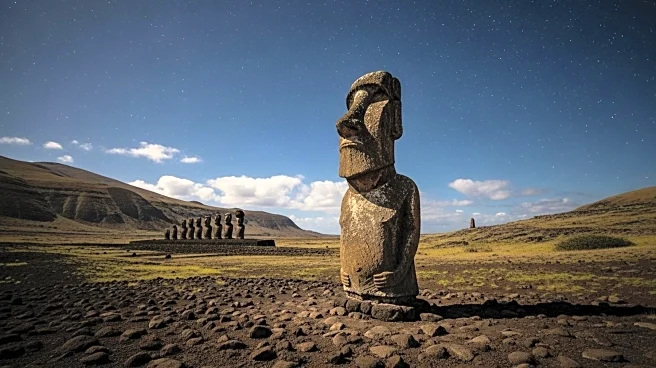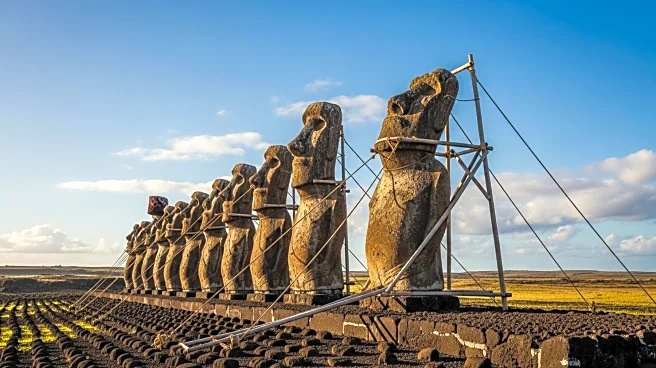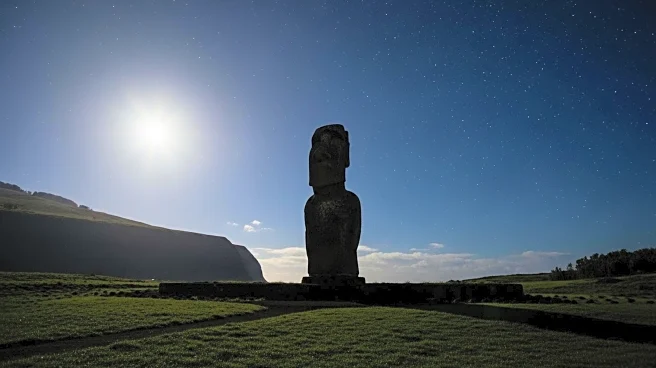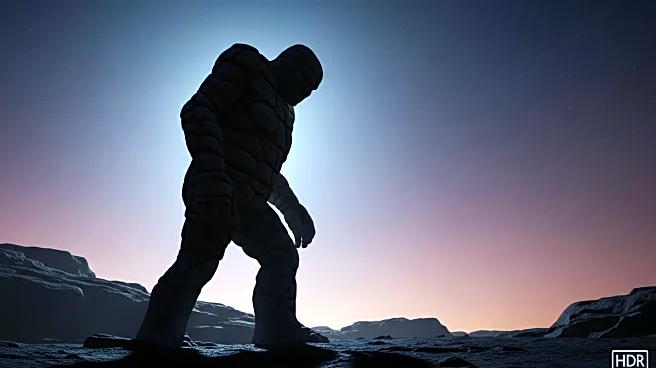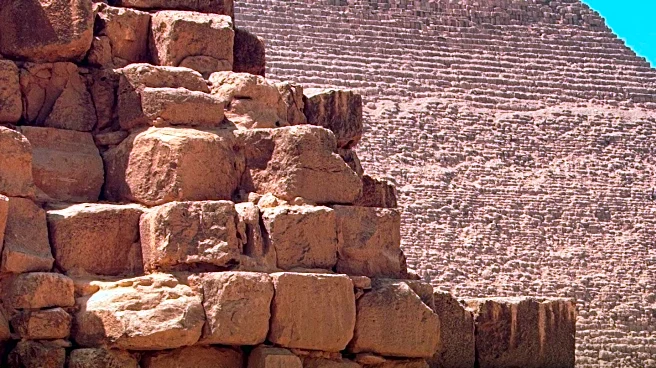What's Happening?
Anthropologists Carl Lipo and Terry Hunt have proposed a new theory explaining how the moai statues of Easter Island were transported. Their research, published in the Journal of Archaeological Science, involved analyzing 962 statues and creating detailed 3D models to understand their design. The team conducted experiments demonstrating that the statues could be moved using ropes to 'walk' them in a zigzag motion. This method allowed a replica statue weighing 4.35 tons to be moved 330 feet by just 18 people in 40 minutes. The findings challenge previous theories that suggested the statues were moved using wooden sleds or were relics of alien civilizations. The researchers argue that the statues' design features, such as a wide D-shaped base and forward lean, facilitated this 'walking' motion.
Why It's Important?
This research provides a scientific basis for understanding the transportation of the moai statues, a mystery that has intrigued scholars for years. It highlights the engineering prowess and resourcefulness of the Rapa Nui people, offering a new perspective on their cultural and technological achievements. The study underscores the importance of using scientific methods to evaluate historical evidence, moving away from speculative theories. By aligning with oral traditions that describe the statues as 'walking,' the research honors the ingenuity of the island's inhabitants and their ability to adapt to limited resources. This discovery enriches our understanding of human history and the innovative solutions developed by ancient civilizations.
What's Next?
The researchers plan to further investigate the cultural implications of their findings, exploring how the 'walking' method reflects the societal values and practices of the Rapa Nui people. They aim to collaborate with local communities to integrate traditional knowledge into their research, fostering a holistic approach to understanding Easter Island's heritage. Future studies may focus on the broader applications of the 'walking' technique in archaeology, potentially inspiring new methods for solving other historical mysteries. The team hopes to engage with the scientific community to refine their models and explore additional aspects of the island's history.
Beyond the Headlines
The 'walking' theory not only solves a historical puzzle but also offers insights into the cultural significance of the moai statues. The act of moving the statues upright may have held spiritual meaning, symbolizing the ancestors' journey and their protective role over the community. This discovery challenges previous assumptions about the island's history, prompting a reevaluation of the technological capabilities of ancient societies. It highlights the importance of preserving indigenous knowledge and integrating it into scientific research, providing a more comprehensive understanding of historical events and cultural practices.

